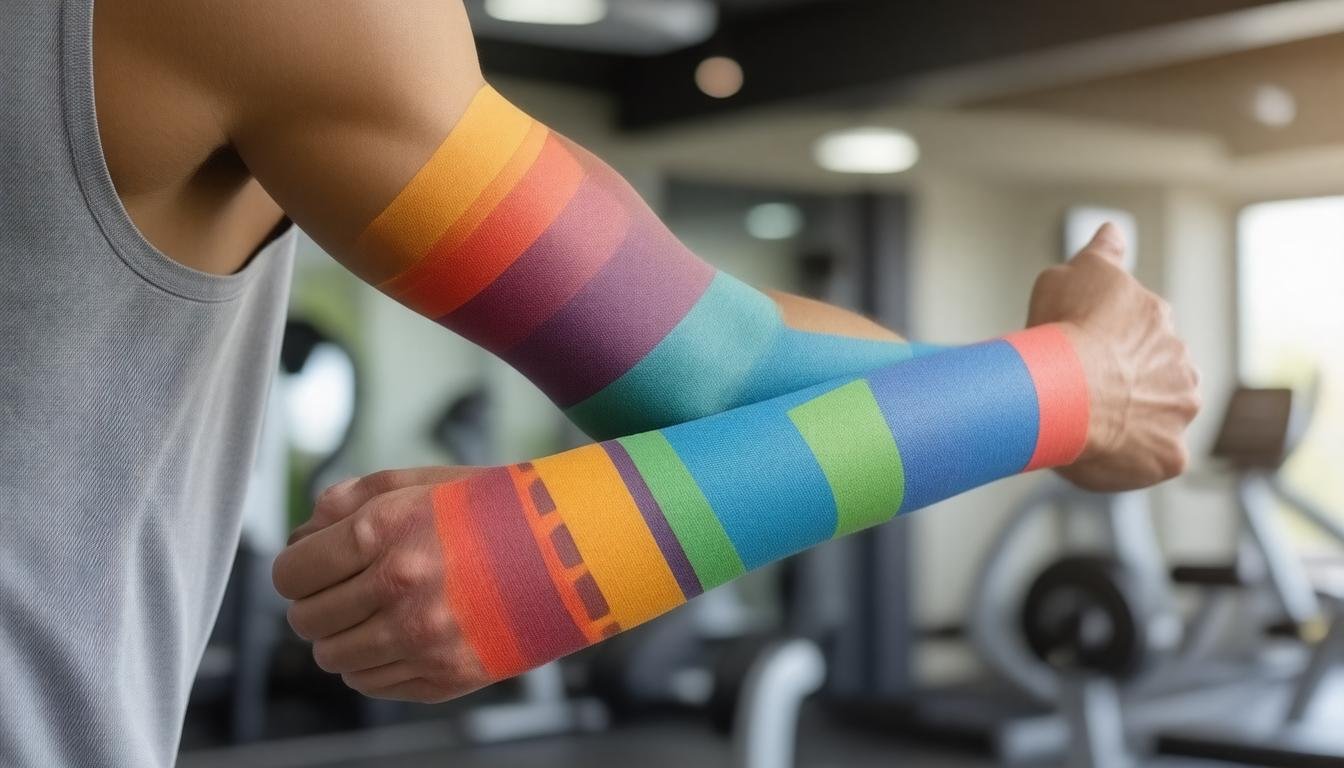In the world of sports and physical therapy, kinesiology taping has emerged as a game-changer, providing effective support and relief for athletes and active individuals alike.
If you’re looking to unlock your performance potential, understanding kinesiology taping techniques can play a pivotal role in enhancing your physical activity and recovery.
In this comprehensive guide, we will explore the fundamentals of kinesiology taping, its myriad benefits, essential techniques you can easily learn, common applications for this revolutionary method, and tips for effective application that will elevate your game.
Whether you’re a seasoned athlete or a weekend warrior, mastering kinesiology taping could be the key to better performance and faster recovery.
Your Sciatica Pain-Free Future Starts Here – Click to Learn More!
Key Takeaways
- Kinesiology taping is a versatile technique that can enhance athletic performance and aid in injury recovery.
- The benefits of kinesiology taping include pain relief, improved circulation, and support for injured muscles and joints.
- Learning essential techniques is crucial for effective kinesiology taping to ensure optimal results.
- Common applications of kinesiology taping can be found in sports, rehabilitation, and everyday activities to prevent injury.
- Proper application tips can maximize the effectiveness of kinesiology tape, making it a valuable tool for athletes and trainers.
Introduction to Kinesiology Taping
Kinesiology taping is a popular technique that has gained substantial attention in the health and fitness community for its therapeutic benefits.
Initially developed in the 1970s by Dr.
Kenzo Kase, kinesiology taping is designed to support and stabilize muscles and joints without restricting their range of motion.
Athletes, physical therapists, and rehabilitation specialists widely utilize this method to help alleviate pain, prevent injuries, and enhance performance.
The elastic properties of the tape mimic the skin, allowing for natural movement while providing support and encouraging proper alignment.
Whether you’re recovering from an injury, managing chronic pain, or simply seeking to optimize your athletic performance, understanding the principles and applications of kinesiology taping can be instrumental in your journey toward better health and well-being.
Benefits of Kinesiology Taping
Kinesiology taping has gained popularity among athletes, physical therapists, and fitness enthusiasts alike for its numerous benefits.
One of the primary advantages of kinesiology taping is its ability to support muscles and joints without restricting movement.
This elastic therapeutic tape aids in alleviating pain and reducing swelling by lifting the skin, thereby promoting better blood circulation and lymphatic drainage.
As a result, many users experience faster recovery from injuries or muscle soreness.
Additionally, kinesiology taping can enhance proprioception, which is the body’s awareness of its own position, leading to improved coordination and stability during various physical activities.
Whether you’re prepping for a competitive event or simply aiming to stay active, incorporating kinesiology taping into your routine can provide that extra edge you need to perform at your best.
‘The body achieves what the mind believes.’ – Napoleon Hill
Essential Techniques for Kinesiology Taping
Kinesiology taping is a widely-used therapeutic technique that has gained popularity for its ability to support and stabilize muscles and joints without restricting movement.
To maximize the benefits of kinesiology taping, it’s essential to understand some fundamental techniques.
First, ensure that the skin is clean and free from lotion to guarantee proper adhesion; this step is often overlooked but is crucial for effectiveness.
Next, cut the tape into appropriate lengths based on the area being treated—longer strips are ideal for larger muscle groups, while shorter strips suit specific joints.
When applying the tape, gently stretch it while adhering to the skin, but be mindful of not overstretching, as this can cause discomfort and reduce the effectiveness of kinesiology taping.
Additionally, using different tape applications, such as I-strips for support and Y-strips for a broader coverage, can address various conditions effectively.
Always finish the taping by applying a gentle rub to ensure the tape adheres properly and to stimulate circulation in the area.
Following these essential techniques will not only help you achieve optimal results but also enhance your overall recovery and performance.
Your Sciatica Pain-Free Future Starts Here – Click to Learn More!
Common Applications and Uses of Kinesiology Taping
Kinesiology taping has gained immense popularity in both athletic and rehabilitation settings due to its versatile applications and benefits.
Primarily used to alleviate pain, kinesiology taping provides support to injured muscles and joints without restricting movement.
Sports teams frequently incorporate this technique to enhance performance and prevent injuries during practices and competitions.
Additionally, physical therapists and chiropractors utilize kinesiology taping for rehabilitative purposes, aiding recovery by improving circulation, reducing inflammation, and promoting proper alignment.
Beyond athletes, individuals seeking relief from everyday discomfort, such as back pain or tendonitis, have also found kinesiology taping to be an effective solution.
Its adhesive quality allows it to be worn for several days, making it a practical option for continuous support and pain management.
Tips for Effective Application of Kinesiology Tape
Kinesiology taping has gained significant popularity among athletes and physical therapy patients alike, thanks to its ability to provide support and alleviate pain with ease.
When it comes to effective kinesiology taping, proper application is crucial for achieving the desired benefits.
First, ensure that the skin is clean and dry before applying the tape, as oil or sweat can hinder adhesion.
Next, cut the tape to the desired length and round off the edges to prevent peeling.
As you apply the tape, stretch it gently to conform to the body part, ensuring it follows the muscle or joint direction for optimal support.
Additionally, avoid overstretching the tape, which can lead to discomfort.
Finally, once applied, rub the tape gently to activate the adhesive, ensuring it stays in place during activities.
Remember, effective kinesiology taping not only aids in injury recovery but also enhances athletic performance when done correctly.
FAQs
What is kinesiology taping?
Kinesiology taping is a therapeutic technique that involves applying elastic tape to the body in a specific way to support muscles and joints, promote recovery, and alleviate pain.
What are the benefits of kinesiology taping?
Kinesiology taping can help reduce pain, increase mobility, improve circulation, support injured or overused muscles, and enhance overall athletic performance.
What are some essential techniques for applying kinesiology tape?
Key techniques include the I-stripe, Y-stripe, fan technique, and the ‘X’ technique, each designed for specific muscle groups or injuries.
It’s important to ensure proper tension and application to achieve the desired effect.
What are common applications and uses of kinesiology taping?
Kinesiology tape is commonly used for sports injuries, rehabilitation, pain relief, improving range of motion, and providing support during physical activities.
Are there any tips for effectively applying kinesiology tape?
Yes!
Ensure the skin is clean and dry, cut the tape with rounded edges to prevent peeling, use appropriate tension based on the desired outcome, and allow the tape to adhere properly for optimal results.






